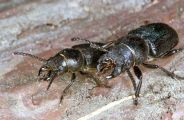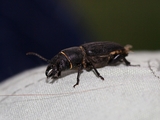Підтримуємо Вільну Україну
 We Support Free Ukraine
We Support Free Ukraine

Biodiversity Map
Taxa

-
Arthropodaphylum
Click to switch
to select orders
and filters > -
Hexapodasubphylum
Click to switch
to select orders
and filters > -
Insectaclass
Click to switch
to select orders
and filters > -
Coleopteraorder
Click to set
as the main taxon
and as a base
← of the left panel > -
Polyphagasuborder
Click to set
as the main taxon
and as a base
← of the left panel > -
Cucujiformiaseries
Click to set
as the main taxon
and as a base
← of the left panel > -
Chrysomeloideasuperfamily
Click to set
as the main taxon
and as a base
← of the left panel > -
Cerambycidaefamily
Click to set
as the main taxon
and as a base
← of the left panel > -
Spondylidinaesubfamily
Click to set
as the main taxon
and as a base
← of the left panel > -
Spondylidinitribe
Click to set
as the main taxon
and as a base
← of the left panel > -
Spondylisgenus
Click to set
as the main taxon
and as a base
← of the left panel >
PL
YES
name status: synonym
BioMap ID: 1022955
taxonomy checked: YES
valid name: Spondylis buprestoides
Data on distribution in Poland

Statistics
- Records: 770
- Publications: 144
- Collections: 24
- Publication authors: 127
- Illustrations (iconography): 1
- Photos (specimen/observation): 6
Taxon description
Szeroko rozprzestrzeniony niemal w całej Europie (prócz Wysp Brytyjskich i północnej Fennoskandii), docierający na wschód przez Syberię do północnych części Mongolii, Chin, Korei i Japonii. Zasiedla tereny nizinne i górzyste do wysokości około 2000 m n.p.m. W Polsce chrząszcz pospolity, występujący na całym obszarze, nie jest jednak notowany jeszcze z Podlasia, Sudetów Wschodnich, Kotliny Nowotarskiej i Tatr. Rozwój trzy-czteroletni. Postacie dojrzałe ukazują się od połowy czerwca i są obserwowane do końca sierpnia. Rójka odbywa się w godzinach popołudniowych i wieczorem. Kopulacja odbywa się zwykle na ziemi w pobliżu przy korzeniowej strefy nie okorowanych pniaków i pni martwych lub obumierających drzew sosen, rzadziej innych iglastych.
Illustrations
... browse
 Spondylis
Spondylisbuprestoides
Photos
... browse
 Spondylis
Spondylisbuprestoides
 Spondylis
Spondylisbuprestoides
 Spondylis
Spondylisbuprestoides
 Spondylis
Spondylisbuprestoides
 Spondylis
Spondylisbuprestoides
 Spondylis
Spondylisbuprestoides
External data sources
- Ostatnie rekordy
-
1148431
 ⊡
⊡ Cerambycidae: Spondylis buprestoides, PL, Starzyna, UTM FD73, 1983 (Gutowski et Kubisz 1995)
Cerambycidae: Spondylis buprestoides, PL, Starzyna, UTM FD73, 1983 (Gutowski et Kubisz 1995) -
1148296
 ⊡
⊡ Cerambycidae: Spondylis buprestoides, PL, Pobrzeże Bałtyku, Międzyzdroje, UTM VV67, 2000 (Wolender et Zych 2007)
Cerambycidae: Spondylis buprestoides, PL, Pobrzeże Bałtyku, Międzyzdroje, UTM VV67, 2000 (Wolender et Zych 2007) -
1148214
 ⊡
⊡ Cerambycidae: Spondylis buprestoides, PL, Nizina Wielkopolsko-Kujawska, Pojezierze Lubuskie, Równina Torzymska, lubuskie, Słubice, Rzepin, UTM VT89, 2022, leg. M. Adamski
Cerambycidae: Spondylis buprestoides, PL, Nizina Wielkopolsko-Kujawska, Pojezierze Lubuskie, Równina Torzymska, lubuskie, Słubice, Rzepin, UTM VT89, 2022, leg. M. Adamski -
1147746
 ×
× Cerambycidae: Spondylis buprestoides, DE, Sarnow, leg. F. Schumacher (Reineck 1919)
Cerambycidae: Spondylis buprestoides, DE, Sarnow, leg. F. Schumacher (Reineck 1919) -
1147745
 ⊡
⊡ Cerambycidae: Spondylis buprestoides, PL, Pojezierze Pomorskie, Gozdowice, UTM VU54, leg. H. Wandeler (Reineck 1919)
Cerambycidae: Spondylis buprestoides, PL, Pojezierze Pomorskie, Gozdowice, UTM VU54, leg. H. Wandeler (Reineck 1919) -
1147744
 ⊡
⊡ Cerambycidae: Spondylis buprestoides, PL, Nizina Wielkopolsko-Kujawska, Torzym, UTM WT09, leg. F. Schumacher (Reineck 1919)
Cerambycidae: Spondylis buprestoides, PL, Nizina Wielkopolsko-Kujawska, Torzym, UTM WT09, leg. F. Schumacher (Reineck 1919) -
1147743
 ⊡
⊡ Cerambycidae: Spondylis buprestoides, PL, Nizina Wielkopolsko-Kujawska, Rzepin, UTM VT89, leg. F. Schumacher (Reineck 1919)
Cerambycidae: Spondylis buprestoides, PL, Nizina Wielkopolsko-Kujawska, Rzepin, UTM VT89, leg. F. Schumacher (Reineck 1919) -
1147742
 ⊡
⊡ Cerambycidae: Spondylis buprestoides, PL, Nizina Wielkopolsko-Kujawska, Drezdenko, UTM WU55, leg. F. Schumacher (Reineck 1919)
Cerambycidae: Spondylis buprestoides, PL, Nizina Wielkopolsko-Kujawska, Drezdenko, UTM WU55, leg. F. Schumacher (Reineck 1919) -
1147741
 ⊡
⊡ Cerambycidae: Spondylis buprestoides, PL, Pojezierze Pomorskie, Dębno, UTM VU74, leg. F. Schumacher (Reineck 1919)
Cerambycidae: Spondylis buprestoides, PL, Pojezierze Pomorskie, Dębno, UTM VU74, leg. F. Schumacher (Reineck 1919) -
1147740
 ⊡
⊡ Cerambycidae: Spondylis buprestoides, PL, Nizina Wielkopolsko-Kujawska, Dąbroszyn, UTM VU83, leg. F. Schumacher (Reineck 1919)
Cerambycidae: Spondylis buprestoides, PL, Nizina Wielkopolsko-Kujawska, Dąbroszyn, UTM VU83, leg. F. Schumacher (Reineck 1919) - ... more
- Powiązane publikacje
-
Szafraniec S. 2020. Możliwości wykorzystania chrząszczy kózkowatych (Coleoptera, Cerambycidae) w zajęciach edukacyjnych Babiogórskiego Parku Narodowego – waloryzacja gatunków. Wyd. Stowarzyszenie Gmin Babiogórskich, Babiogórski Park Narodowy. Rocznik Babiogórski, 21: 127-138.
 Show records
Show records -
Plewa R., Jaworski T., Tarwacki G., Gil W., Horák J. 2020a. Establishment and maintenance of power lines are important for insect diversity in Central Europe. Zoological Studies, 59(3):1-9.
 Show records
Show records -
Melke A., Michalcewicz J., Olbrycht T., Rossa R., Szafraniec S., Wojas T. 2020. Nowe dane i uwagi o występowaniu rzadkich i reliktowych gatunków sprężykowatych (Coleoptera: Elateridae) na obszarze Polski. Wiad. Entomol., 39(3):online 12A: 1-6.
 Show records
Show records -
Marczak D. 2020. Chrząszcze saproksyliczne głównych typów siedliskowych Puszczy Kampinoskiej - studium faunistyczno-ekologiczne. Prace Instytutu Badawczego Leśnictwa. Rozprawy i Monografie. Sękocin Stary. 285 pp.
 Show records
Show records -
Gutowski J.M., Sućko K., Borowski J., Kubisz D., Mazur M.A., Melke A., Mokrzycki T., Plewa R., Żmihorski M. 2020b. Post-fire beetle succession in biodiversity hotspot: Białowieża Primeval Forest. For. Ecol. Manage., 461:117893.
 Show records
Show records - ... more





